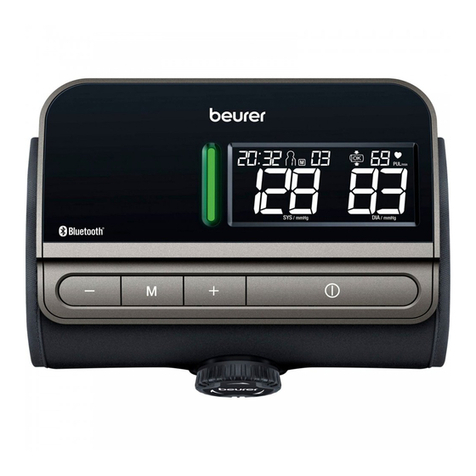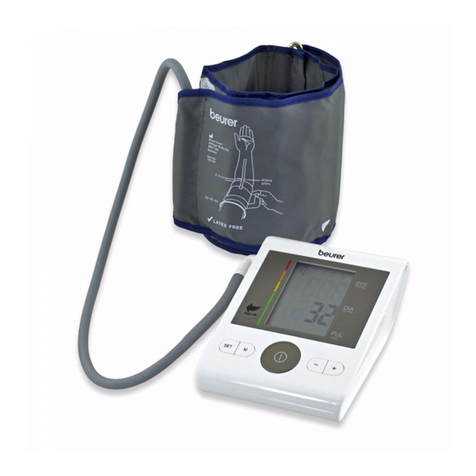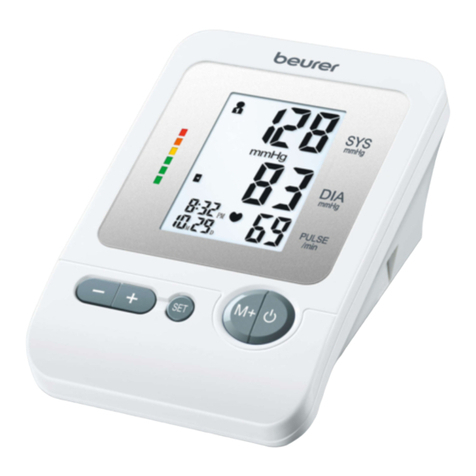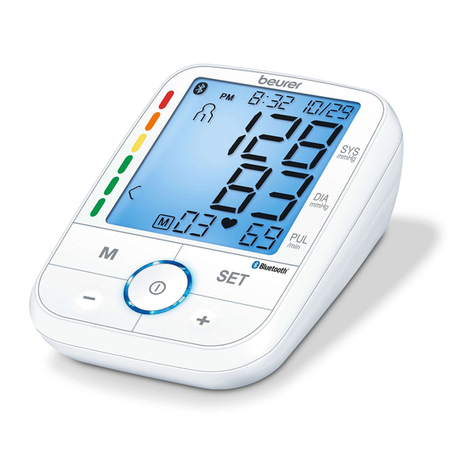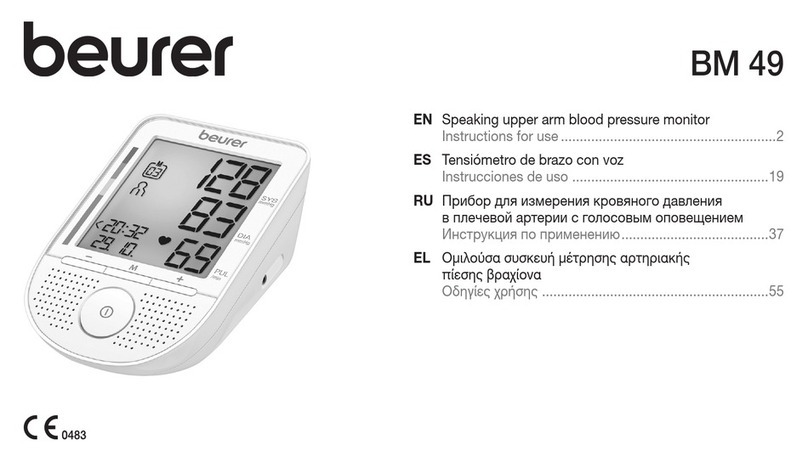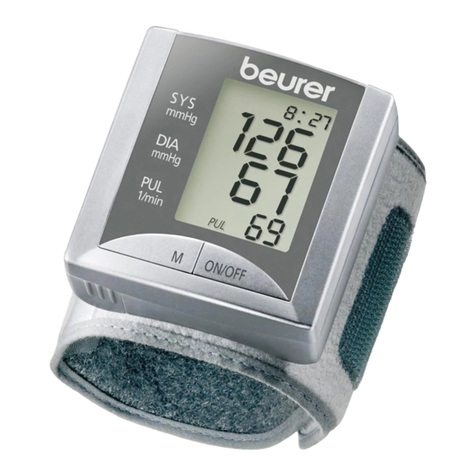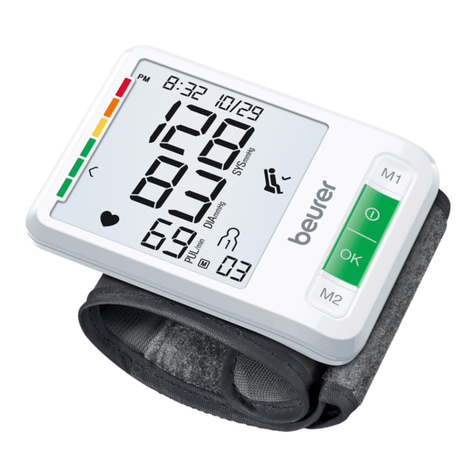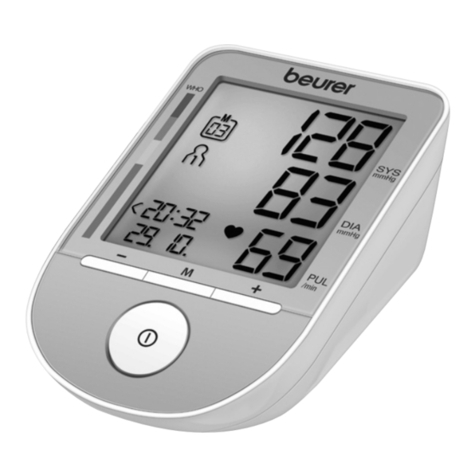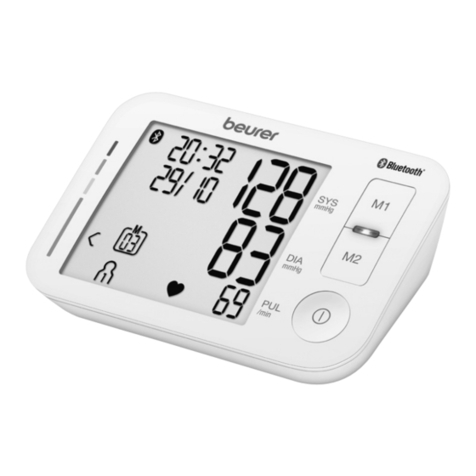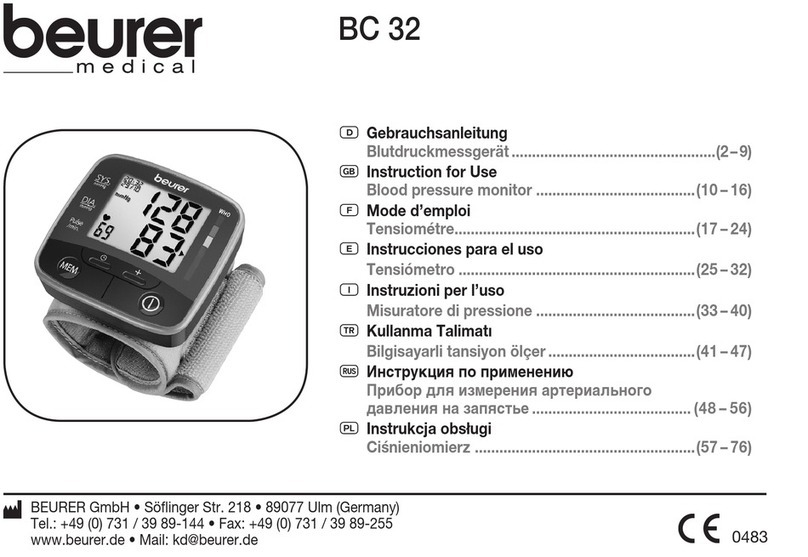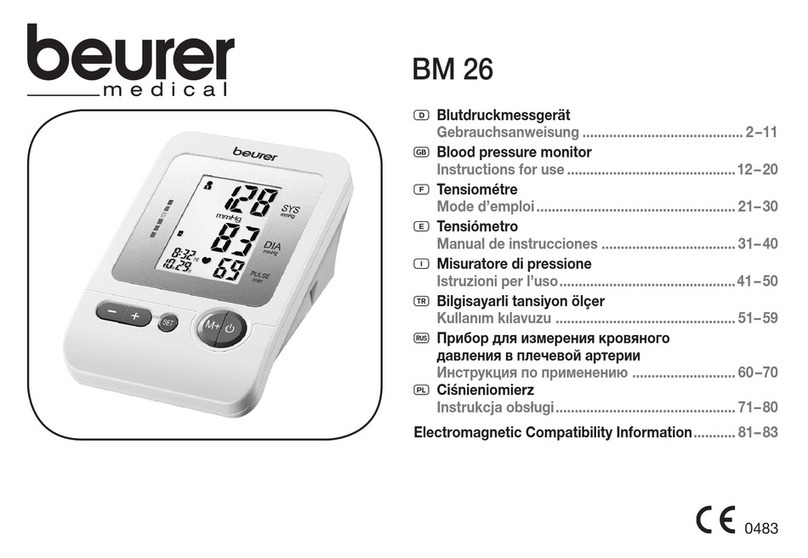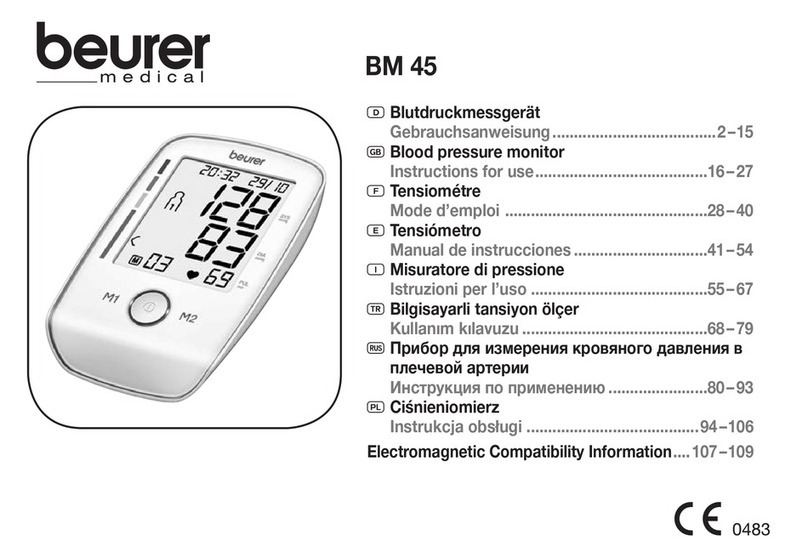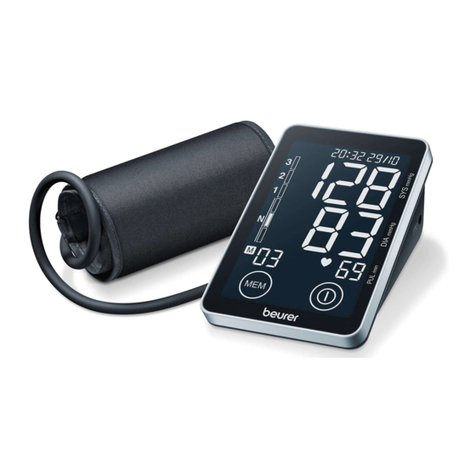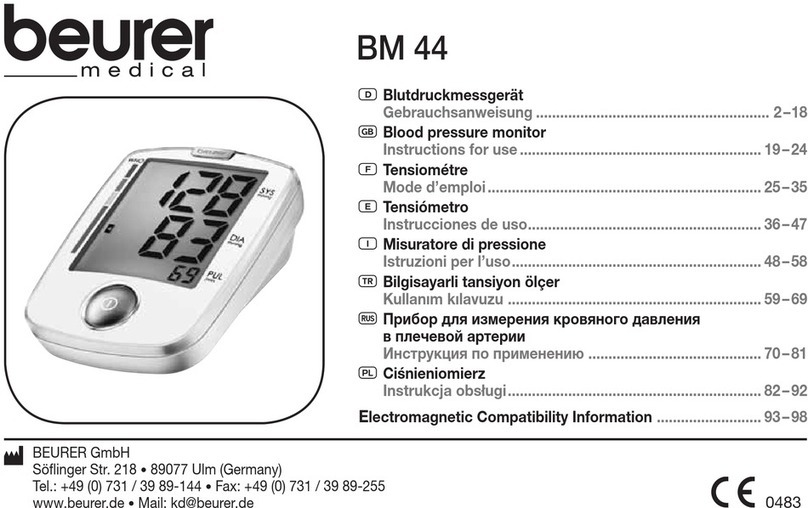
4
responsible for their safety or are instructed by such a person in how to
use the device. Supervise children around the device to ensure they do
not play with it.
•
Do not use the blood pressure monitor on newborns, pregnant women
or patients with preeclampsia.
We recommend consulting a doctor before using the blood pressure
monitor during pregnancy.
•
Cardiovascular diseases may lead to incorrect measurements or have
a detrimental effect on measurement accuracy. The same also applies
to very low blood pressure, diabetes, circulatory disorders and arrhyth-
mias as well as chills or shaking.
•
The blood pressure monitor must not be used in connection with a
high-frequency surgical unit.
•
Only use the device on people who have the specified upper arm
measurement for the device.
•
Please note that when inflating, the functions of the limb in question
may be impaired.
•
During the blood pressure measurement, blood circulation must not
be stopped for an unnecessarily long time. If the device malfunctions,
remove the cuff from the arm.
•
Avoid any mechanical restriction, compression or bending of the cuff
line.
•
Do not allow sustained pressure in the cuff or frequent measurements.
The resulting restriction of the blood flow may cause injury.
•
Ensure that the cuff is not placed on an arm in which the arteries or
veins are undergoing medical treatment, e.g. intravascular access or
therapy, or an arteriovenous (AV) shunt.
•
Do not use the cuff on people who have undergone a mastectomy.
•
Do not place the cuff over wounds as this may cause further injury.
•
Place the cuff on your upper arm only. Do not place the cuff on other
parts of the body.
•
You can either use the blood pressure monitor with batteries or with
a mains part. Please note that data transfer and data storage is only
possible when your blood pressure monitor is supplied with power. As
soon as the batteries are empty or the mains part is disconnected from
the power supply, the blood pressure monitor loses the date and time.
•
To conserve the batteries, the monitor switches off automatically if no
buttons are pressed for one minute.
•
The device is only intended for the purpose described in these instruc-
tions for use. The manufacturer is not liable for damage resulting from
improper or careless use.
Storage and Care
•
The blood pressure monitor is made up of precision electronic compo-
nents. Accuracy of readings and the instrument’s service life depend
on careful handling.
– You should protect the device from impact, moisture, dirt, major tem-
perature fluctuations and direct exposure to the sun’s rays.
– Never drop the device.
– Do not use near strong electromagnetic fields, i.e. keep it away from
any radio systems and mobile phones.
– Only ever use the cuffs provided with the monitor or original replace-
ment cuffs. Otherwise erroneous results will be recorded.
•
If the instrument is not used for any length of time, we recommend
removing the batteries.
